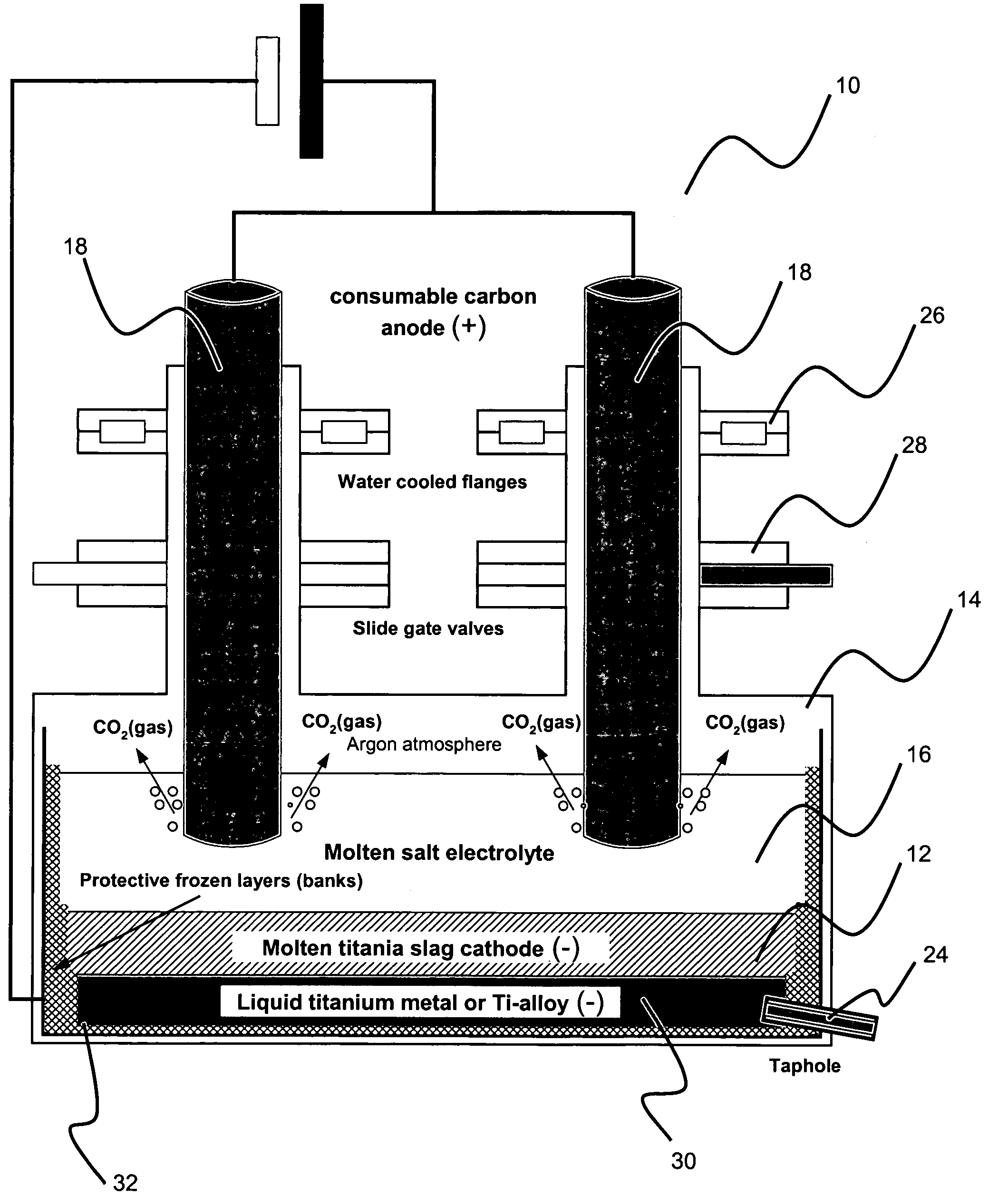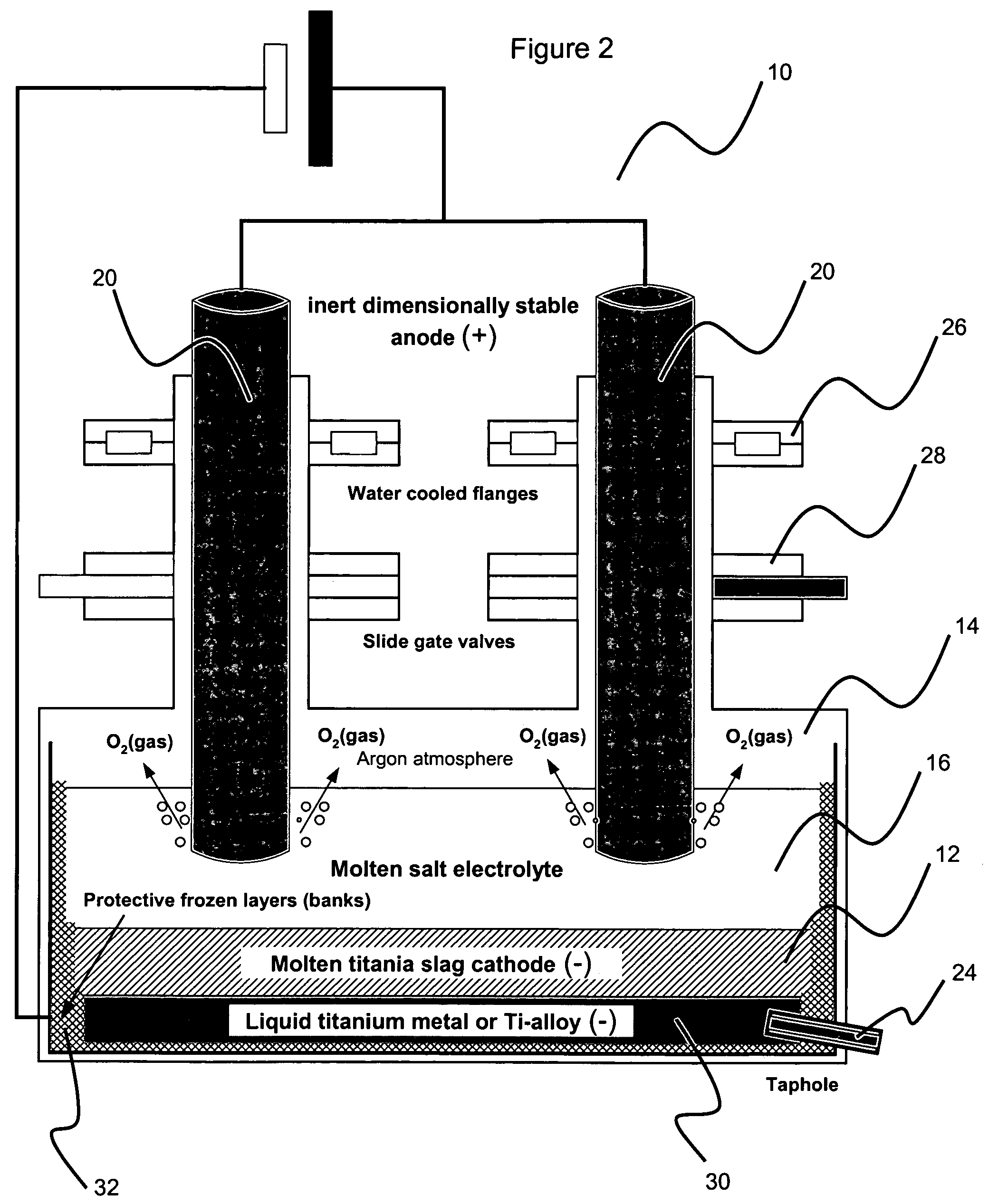Method for electrowinning of titanium metal or alloy from titanium oxide containing compound in the liquid state
- Summary
- Abstract
- Description
- Claims
- Application Information
AI Technical Summary
Benefits of technology
Problems solved by technology
Method used
Image
Examples
example 1
Reference Example
[0061]This example is only intended to provide the performances of the electrochemical deoxidation of solid titania slag. This in order to serve as reference experiment to allow later comparison with the performances of the present invention. For instance, a mass of 0.100 kg of crude titanium slag from Richards Bay Minerals (see Table 1) with at least 85 wt. % TiO2 is crushed and ground to a final particle size comprised between 0.075 mm and 0.420 mm (i.e., 40 and 200 mesh Tyler). This step is required at the laboratory scale only in order to facilitate the removal of inert minerals present in the crude titania slag (e.g., silicates, sulfides) and facilitate the removal of associated chemical impurities (e.g., Fe, Si, Ca, Mg). Secondly, the finely ground titania slag undergoes a magnetic separation step. The strong ferromagnetic phases such as for instance free metallic iron entrapped in the titania slag during the smelting process and its intimately bound silicate ...
example 2
Reference Example
[0069]The experimental conditions depicted in the following example just differs from that of the example 1 in that the temperature of electrolysis is now increased to 1100° C. Even in that case, despite electrochemical performances are improved (see Table 3) compared to the previous example with a specific energy consumption of 346 kWh per kilogram of titanium produced and a faradaic efficiency close to 2.4% the final purity of the titanium alloy is quite identical because the feedstock material remained the same.
example 3
Reference Example
[0070]The experimental conditions depicted in the following example just differs from that of the example 1 in that the temperature of electrolysis is now increased to 1350° C. Even in that case, despite electrochemical performances being greatly improved (see Table 3) compared to the previous example with a lower specific energy consumption of 31 kWh per kilogram of titanium produced and a faradaic efficiency close to 13% the final purity of the titanium alloy is quite identical because the feedstock material remained the same.
PUM
| Property | Measurement | Unit |
|---|---|---|
| Temperature | aaaaa | aaaaa |
| Temperature | aaaaa | aaaaa |
| Temperature | aaaaa | aaaaa |
Abstract
Description
Claims
Application Information
 Login to View More
Login to View More - R&D
- Intellectual Property
- Life Sciences
- Materials
- Tech Scout
- Unparalleled Data Quality
- Higher Quality Content
- 60% Fewer Hallucinations
Browse by: Latest US Patents, China's latest patents, Technical Efficacy Thesaurus, Application Domain, Technology Topic, Popular Technical Reports.
© 2025 PatSnap. All rights reserved.Legal|Privacy policy|Modern Slavery Act Transparency Statement|Sitemap|About US| Contact US: help@patsnap.com



